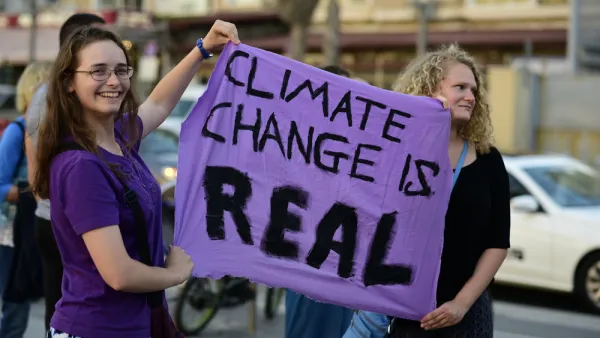A Washington Post investigation found major discrepancies between actual emissions and the levels reported to the United Nations.

A Washington Post investigation by Chris Mooney, Juliet Eilperin, Desmond Butler, John Muyskens, Anu Narayanswamy, and Naema Ahmed found that "Across the world, many countries underreport their greenhouse gas emissions in their reports to the United Nations." The analysis revealed gaps ranging from 8.5 billion to 13.3 billion tons of undercounted emissions per year.
This underreporting means that the challenges of mitigating climate change and reducing emissions are even bigger than they seem. The United Nations Framework Convention on Climate Change (UNFCCC), which oversees global emissions reduction efforts, points to "the application of different reporting formats and inconsistency in the scope and timeliness of reporting (such as between developed and developing countries, or across developing countries)" as reasons for the discrepancies. The authors, meanwhile, call it "the result of questionably drawn rules, incomplete reporting in some countries and apparently willful mistakes in others."
According to the article, key factors include subtractions made by countries based on the claim that land itself absorbs CO2, undercounted methane emissions, and underreported fluorinated gases.
The gap, the authors say, is caused in large part by the U.N.'s reporting system. "While the Paris agreement calls for a more transparent system by the end of 2024, it could take until 2030 to get to robust reporting — an eternity compared with the tight time frame the world needs to get it right."
FULL STORY: Countries’ climate pledges built on flawed data, Post investigation finds

National Parks Layoffs Will Cause Communities to Lose Billions
Thousands of essential park workers were laid off this week, just before the busy spring break season.

Retro-silient?: America’s First “Eco-burb,” The Woodlands Turns 50
A master-planned community north of Houston offers lessons on green infrastructure and resilient design, but falls short of its founder’s lofty affordability and walkability goals.

Delivering for America Plan Will Downgrade Mail Service in at Least 49.5 Percent of Zip Codes
Republican and Democrat lawmakers criticize the plan for its disproportionate negative impact on rural communities.

Test News Post 1
This is a summary

Test News Headline 46
Test for the image on the front page.

Balancing Bombs and Butterflies: How the National Guard Protects a Rare Species
The National Guard at Fort Indiantown Gap uses GIS technology and land management strategies to balance military training with conservation efforts, ensuring the survival of the rare eastern regal fritillary butterfly.
Urban Design for Planners 1: Software Tools
This six-course series explores essential urban design concepts using open source software and equips planners with the tools they need to participate fully in the urban design process.
Planning for Universal Design
Learn the tools for implementing Universal Design in planning regulations.
EMC Planning Group, Inc.
Planetizen
Planetizen
Mpact (formerly Rail~Volution)
Great Falls Development Authority, Inc.
HUDs Office of Policy Development and Research
NYU Wagner Graduate School of Public Service





























